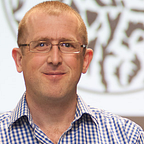Artists and Phenomenologies of Climate Change: A Community Proposal
Teresa Akers is a multidisciplinary designer, artist, and culture-maker, focused on realizing dreams into built products, experiences, and environments. Her practice “dances between paper space, digital space, and physical space to bring to bear highest expressions of purpose, giving impact-oriented ventures an edge in the burgeoning new experience economy.
Theresa’s professional investigations into built and virtual environment center on how spaces, products, and environments tell stories. This experience allows her to apply systems level perspectives on providing a coherent, synchronous relationship between the mission of organisations and how they are expressed — through company culture all the way through to their product and service offerings.
For this reason it has been a huge pleasure to have been one of Theresa’s masters degree thesis supervisors for her course on Sustainable Design at Minneapolis College of Art and Design (MCAD).
Titled ‘Artists and Phenomenologies of Climate Change‘, the motivation behind this research came from a need to understand how to change cultural views on climate change and sustainability. The project, therefore, steps through the ways human social systems have scientifically mimicked natural systems, cognition as a natural phenomenon, and systems theory to propose a potential solution where artists may receive the resources needed to do their important work.
It explores a collective ownership concept, a hybrid of consultancy and coworking/maker space, whereupon the tenants of innovation research could be leveraged in a community through the “focus” of the consultancy. It concludes with how it might manifest if the proposal were to be an architecture of space:
“Society is in a state of crisis as a result of phenomena related climate change. There appears to be a need to revisit societal approaches to problem solving, collaboration, and innovation. However, society is not armed with an awareness of the connection between perception and the sustainability crisis. This disconnect is a major factor in the destabilization of the environment. Sustainable change can happen when we create new narratives of social cohesion and empathy. Artists and creatives are uniquely qualified to create these through suspending disbelief and inviting others to believe in the possibility of different futures.
Through phenomenological approaches, artists explore emergent properties of specific slices of the experiential whole through prolific creation of catalytic, creative prompts engaging metaphoric perception through artistic work. One example of a potential approach utilizing frameworks that serve to reorganize existing conceptual patterns in the media is organizing a replicable business structure that artists can use. A business of this kind could potentially amplify and multiply the natural capacity of artists to create socially cohesive artwork in the form of creative prompts.
Multiplying the amount of artwork present in current society has the potential to foster more empathy in society, in turn fostering deeper connections to self, society, and planet. The presentation concludes with an exploration of an example hat applies the principles, theory, and sustainability frameworks into a renovation/reimagining of The Soap Factory — a Minneapolis based art fixture.”
Theresa decided to reach out to me after having been introduced to our work with both Customer Experiences with Soul and Holonomics by Denise DeLuca, the course director of Sustainable Design. Theresa cites and references our Holonomics approach and our Customer Experiences with Soul framework throughout her thesis.
As she describes on her website, she sees a hugely interwoven connection between UX (user experience design) and her own design practices.
“I may lean more on the physical environment, but there is no fundamental difference between what UX designers do and what I do. Virtual reality is reality is interface design is also intelligent shades of blue is also branded experiences.
I specialize in optimizing connections. I do this through creating communication pieces through a variety of mediums. Experiences, therefore, could be loosely classified as my medium.”
I have really enjoyed our conversations which have particularly covered the phenomenology dimension of our work, exploring lived experience and the qualities of organisations with soul as described by our Holonomic Circle.
“Artists and creatives are uniquely poised to intervene at the most important leverage point in our problem statement. An artist possesses the capacity to suspend disbelief, and for a moment create space for the viewer to “become receptive to a work of the imagination”, to believe in the possibility of different futures. Artists approach their work with questions and attempt to answer them through making, as is present in deep ecology.
While the layperson refers to their profession in a variety of different ways denoting specializations, artists tend to relate to their profession in terms of a practice, implying that the artist devotes time to a repeated understanding of the wholeness of form. Through open iteration, before premature decisions on the nature and importance of a phenomena, artists explore emergent properties of specific slices of the experiential whole through prolific creation.”
As part of her writing process, Theresa recorded this introduction in which she explains her motivation and background to her research:
I would really like to congratulate Theresa for all her has work, and for producing such a beautifully presented final thesis. You can download a copy from MCAD’s website here: Artists and Phenomenologies of Climate Change: A Community Proposal
And to see more of Theresa’s work and portfolio, please explore her professional website: prys.mx
